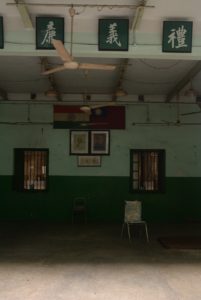By Isobel Chiang, 07/26/2019. And then, just like that, it was time to get on a plane to Kolkata.
“You’re going to Kolkata?” people would ask me, incredulously. “But it’s so old, so dirty, so decrepit. Worst city in India, for sure.”
I have been walking through Kolkata for a week now. There is a certain grittiness to the city: The humidity and dust in the air stick to your skin like static. The streets smell alternatingly like fermenting mango and hot cow dung. When you’re unlucky, you smell both at the same time. When you’re lucky, you smell nothing but a miasma of burning diesel.
But it’s also the most interesting, textural, and complicated city I’ve been to in India. Unlike Delhi, there is no “old” and “new” Kolkata. Instead, the old and new share the same neighborhoods and city blocks. Sometimes, they will even share the same building, like when a modern cell phone store — with glass doors and air conditioning and stock photos of Indian women wearing western style clothing — occupies the bottom floor of a shanty apartment building, whose broken shutters and sagging roof suggests it was built before the Mughals arrived. When I walk I am jostled between the old and new — often without warning. This feels turbulent and confusing, but only momentarily— it passes quickly, like a head rush.
What persists is a larger, more all-consuming confusion with India as a whole, more specifically, my relation to it. As V.S Naipaul wrote in 1977: “It has taken me much time to come to terms with the strangeness of India, to define what separates me from the country.”
A few days ago I took the metro to #6 Madan Street. #6 Madan Street is a very, very old building. It was probably once a vibrant mustard colour; today it’s a faded yellowy-beige, like a manilla folder that’s been left in the sun too long. On the first floor is a Vivo store, offering “India’s best mobile phones with great features & specifications.” Above is an apartment complex.
Madan Street is in the center of Kolkata, just two minutes south of Chandni Chowk metro station. The street is choked and overcrowded, with stalls, stores, and rickshaw pullers. And honking, honking, from all directions. Dozens of men are asleep on the ground. Those who are not asleep move as slow as molasses, lulled by the effects of gutkha and the heat. Not enough work for all these people.
I stand on the sidewalk, directly across from #6 Madan Street. I pull my cell phone out of my bag and facetime my dad. “Is this the one?” I ask. “Yep, that’s it. #6 Madan Street. We lived on the fourth floor, the apartment to the left.”
My father lived in #6 Madan Street for the first twelve years of his life, until one day, just like that, it was time to get on a plane to Toronto. He and his family were part of a mass exodus of Chinese-Indians who fled Kolkata after the 1962 Indo-China war. As with the British, once they left India, they never came back.
Over 50 years later, My father has no interest in visiting India. If I presented him with a free plane ticket to Kolkata, he would fake a very serious and immediate illness. I never understood his indifference: “Don’t you want to taste real Indian food again?” I’ve asked. “Don’t you want to see where you came from, see how it’s changed? Aren’t you just a little bit curious?”
“Nope.”
It has taken me much time to come to terms with the strangeness of my father, to define what separates him from the country he was born in. Why is he so totally unsentimental about India, so uninterested? When I probe him about his childhood, his narration is always the same: he flew a lot of kites; he ate a lot of jalebis; he often picked up his cousin from school and walked him home. Kolkata is only ever depicted with verbs, never adjectives. He has forgotten the vocabulary that could describe the city back to life.
“India for me is a difficult country,” wrote Naipaul, whose family was born in India and later immigrated to Trinidad. “It isn’t my home and cannot be my home; and yet I cannot reject it or be indifferent to it.” I empathize with Naipaul: Over half a century has passed since my dad left India. That’s more than enough time to erase the past. What, if anything, connects me to this place?
And yet, just today, when I visited Nam Soon— a members-only Chinese community center in Tiretta Bazaar— I found out that my grandfather was once a member there, and that every week him and his friends would gather and play mahjong. “You are most welcome here, come back anytime” said one of the members. His face was covered with faded freckles, and his eyes were calm and warm, despite his thick glasses. The kind of face made for rich description.
“Next month we’re having a party. There will be food. You come,” he said in an accent that eerily matches my grandmother’s — not entirely Chinese, not entirely Bengali. “Your grandfather is our elder, you must come!”
“I wish I could, but I’ll be back in Canada by then,” I replied with true remorse, and it was just as Naipaul wrote: “I am at once too close and too far.”

